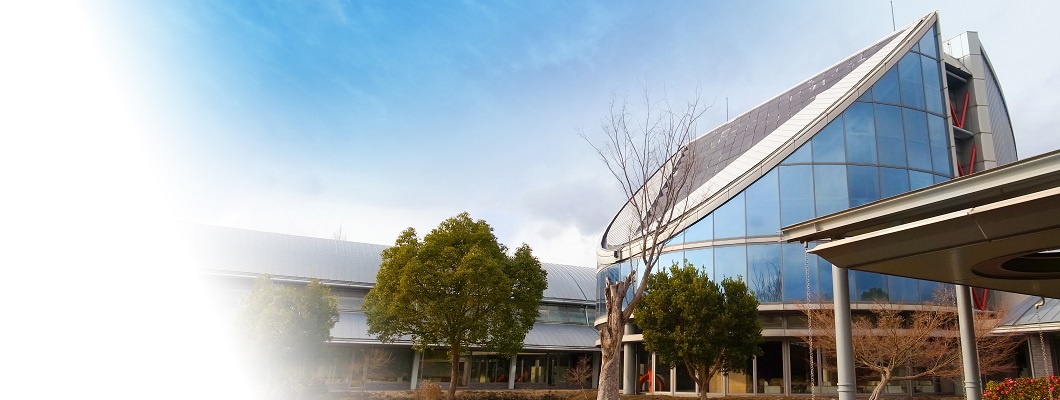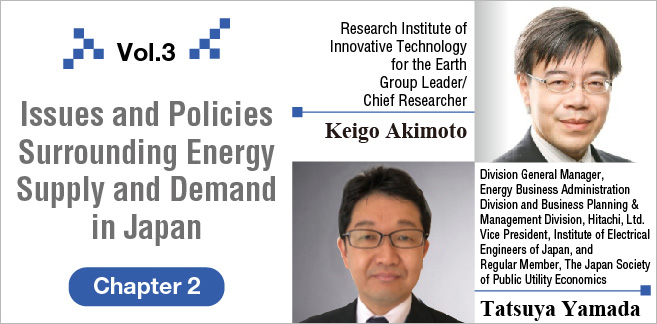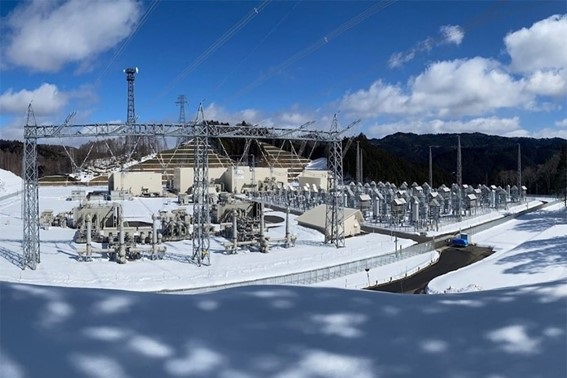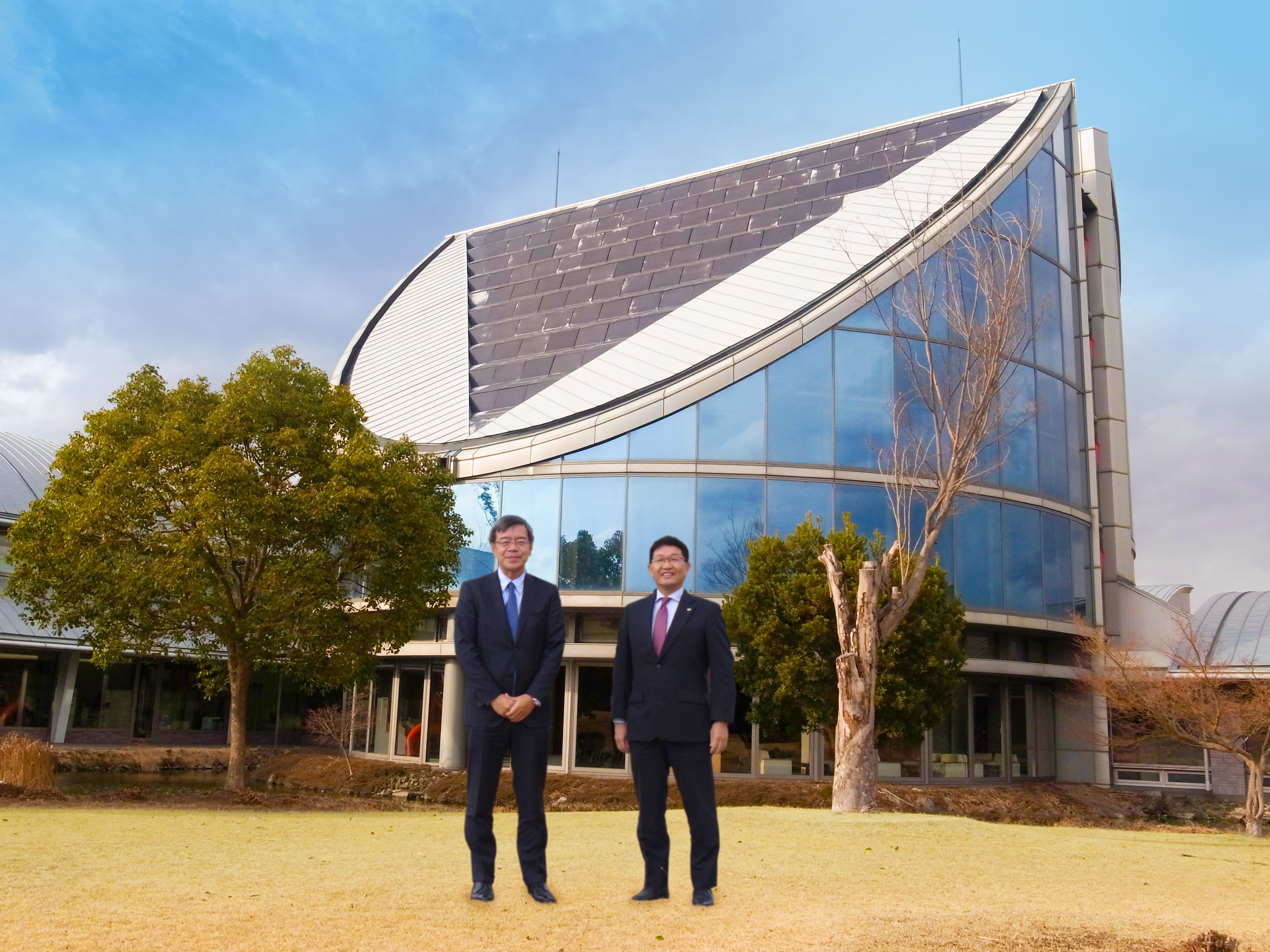
In this third part of our “Listening to Key Persons” series, we spoke with Keigo Akimoto, Chief Researcher and Group Leader of the Systems Analysis Group at the Research Institute of Innovative Technology for the Earth (RITE), who specializes in the analysis and evaluation of energy and environmental systems and policy recommendations for strategies to combat global warming. Mr. Akimoto is an active member of government expert panels and committees on climate change and energy issues, and is engaged in a wide range of research and policy recommendation activities in energy and environment-related fields. Mr. Yamada asked Mr. Akimoto what kind of policies the Japanese government is pursuing to achieve carbon neutrality, and what kind of energy innovation is required.

In part one of this discussion, Mr. Akimoto spoke about Japanese government policy measures to help secure future power supply capacity, such as the long-term decarbonized power supply auctions, against the current backdrop of a tight electricity supply-demand balance. On the other hand, Mr. Akimoto gave his impressions of the COP27 discussions, pointing out the difficulty of international cooperation in an increasingly divided world. He says that, to achieve carbon neutrality under such circumstances, it is essential to secure sources of power that contribute to decarbonization and are economically rational.
This is where the power of digital technology is needed. Mr. Akimoto says that it is very important to create new value by using smart meters to manage supply and demand, and combining power-related data with data from other fields. In addition to renewable energy, nuclear power also plays a crucial role in terms of the national energy mix. In this second part of the discussion, Mr. Yamada and Mr. Akimoto discuss energy systems and technologies that are essential for future energy innovation in Japan.
Yamada:Last time, you mentioned how utilizing digital technology will be important as we work to achieve carbon neutrality by 2050. Even with the current rocketing of energy prices, we should be able to keep prices down by using digital technologies skillfully to reduce waste. For example, it is possible to set up a rate pricing plan based on the time of day, in which electricity rates are set higher during the evening, when demand is at its peak. Conversely, prices can be lowered significantly during the day in fine weather, when the amount of power generated by solar power plants increases. If efforts such as this lead to a change in the awareness and behavior of electricity consumers, the use of cheap and clean electric power will increase. If the number of electric vehicles (EVs) increases, home solar power generation becomes more widespread, and storage battery technology advances, then power supply and demand management will have a greater meaning in the future.
Akimoto:Because electricity—by its nature—is difficult to store, there are many situations where it is wasted, especially on the demand side. As you say, if we can optimally manage supply and demand by make skillful use of digital technologies when controlling time-related supply and demand imbalances, or adjusting regional supply-demand imbalances, I believe that this will offer great opportunities for growth.
Yamada:The key to achieving this is the smart meters installed at each home. In Japan, smart meters that measure power usage every 30 minutes have been installed in almost all households. As you know, Japan is the only country in the world to have achieved this so far. From fiscal 2025, we plan to sequentially replace those meters with next-generation smart meters with an even higher resolution of measurement. Going forward, it will be important to analyze the data obtained from these meters and link our findings to new services and solutions. If we can lead the way in this area, I believe that it can become an industrial strategy for Japan and also contribute significantly to achieving carbon neutrality in emerging countries.

Source: September 2021 Agency for Natural Resources and Energy, Electricity and Gas Industry Department, New Added Value Creation Utilizing Electricity Data: Electricity Data and Smart Meters
Akimoto:I think that by combining smart meter data with other Big Data sources, it may also be possible to create new value. After obtaining consent for the use of data, we believe that we can utilize it for CO2 reduction while applying it to other services, such as in reducing waste due to redelivery by parcel delivery services, or creating optimal store opening plans for supermarkets. In other words, by looking at data on how people actually live in each community, findings can be utilized for energy management and optimal urban planning for entire cities.
The important point here is how we connect data across the board and link it to the creation of new value. To that end, we must actively communicate with other departments and fields and consider new businesses in a cross-sectoral manner. I think that flexible thinking is very important in order to create new value.
Yamada:In that sense, the activities of the Grid Data Bank Lab (GDBL)—which began with the union of TEPCO and Chubu Electric Power—have been taken over by GDBL Corporation, and the use of electric power data obtained from smart meter data is already underway.
Akimoto:In order to create new businesses using electricity data, I think we should design systems that make it easier for venture (startup) companies to enter the market, considering the ease of access to data. Otherwise, even if Japan is ahead in terms of smart meter installation, I am afraid that we will be overtaken by overseas competitors in the field of data utilization.
In view of this, we are focusing on the utilization of data for the development of CASE (Connected Autonomous Share & Service Electric) solutions. In the future, car sharing and ride sharing of fully autonomous vehicles will advance dramatically, and it may become possible to create a world where the car of your choice will come to pick you up when you need a ride. If this becomes a reality, reductions in CO2 emissions will advance even in the transportation sector, which has been considered a difficult area until now. Since the number of automobiles itself will also decrease, the use of materials such as iron, plastic, rubber, and glass—which have been used heavily in automobile manufacturing until now—can also be reduced. In other words, CASE will cause a simultaneous shift in the energy supply side and the demand side. In fact, I feel that, unless such dramatic changes occur, it will be difficult to realize carbon neutrality by 2050.
Yamada:With regard to CASE, over the course of five years between 2016 and 2021, Hitachi Europe conducted the world's largest ever demonstrative testing project, Optimize Prime, using more than 8,000 electric vehicles in London, UK. The purpose of this project was to collect data on EVs—owned by companies such as UK energy operator Centrica, UK postal giant Royal Mail Group, and the major US ride-hailing service Uber—to explore optimal charging facility networks and power supply solutions. As a result of this demonstration experiment, we were able to show that the mass introduction of commercial EVs around the world will contribute to the acceleration of carbon neutrality.
Akimoto:That's a very important initiative.Of course, these kinds of developments will transform the traditional business model of the automotive industry. In the future, the focus will shift from the actual cars themselves to initiatives such as transportation system management, which really utilize digital technologies to reduce energy consumption as a whole. It is important to see these changes as opportunities for growth across the country, and for companies to work on them across the board.
Yamada:By the way, Mr. Akimoto, how do you regard the position of nuclear power generation in the energy mix with a view to achieving carbon neutrality?
Akimoto:Naturally, there are pros and cons to nuclear power, and I fully understand that there is some strong opposition to it, especially after an accident like the one at TEPCO's Fukushima Daiichi nuclear power plant. But I believe that we must assess all of the risks comprehensively based on the situation we are facing. In other words, how should we regard not only the risk of a nuclear accident but also the risks of climate change, energy security, stable supply, and economic viability? Nuclear power also an overwhelmingly superior power source to all others, despite the risks involved. In terms of economic viability, it is a relatively cheap source of power, and I still think that nuclear power is a necessary power source.
Japan is poor in terms of energy resources, and has little flat land area available that is suitable for renewable energy. Hydrogen must also be imported from overseas. In addition, the manufacturing industry is strong in Japan, and power consumption is higher than in other countries. Energy is essential to sustaining the economy, and nuclear power is a very important means of generating it. Therefore, Prime Minister Kishida's August 2022 announcement of the government's direction of new construction, expansion, and replacement of nuclear power plants is a very correct decision, and it is necessary to move forward firmly.
Yamada:As a practical problem, though, I believe that the framework of the long-term decarbonized power supply auction system that I mentioned in the first part of this discussion alone makes it difficult to build new nuclear power plants. Without new expansion and replacement, it will be difficult to secure a level of 20% nuclear power in the energy mix, as stated in the government's proposal.
Akimoto:Yes, that's very true. I think that it is necessary. for example, to introduce a scheme such as the RAB (Regulated Asset Base) model, which collects costs from consumers through regulated rates using the fully distributed cost method. In addition, since it is difficult to build completely new nuclear power plants, I think we have no choice but to think in the direction of expanding existing nuclear power plants.
In the future, if only Japan's electricity prices continue to rise under strict emission reduction targets, then companies may begin to relocate their manufacturing bases overseas. This could lead to a vicious cycle of declining demand for electricity, making it increasingly difficult to invest in nuclear power, and leading to a further increase in electricity prices. Of course, we should reduce our consumption of primary energy to decarbonize, but on the other hand, I think that we should aim to raise demand for electricity demand and supply electricity at affordable rates.
Yamada:On the other hand, in the utilization of renewable energy, distributed power sources and transmission and distribution networks are also major issues. The transmission and distribution grid networks of general power transmission and distribution companies are based on a consignment fee system, and the necessary costs can basically be recovered as electricity charges. Looking ahead, if power sources are decentralized due to the widespread adoption of renewable energy and on-site power generation—which does not utilize the transmission and distribution grids of general electric power companies—increases, then there is concern that the utilization rate of transmission lines will decrease. This will make it difficult to collect consignment fees, and, as a result, there will be a vicious cycle in which consignment fees will rise even further.
Akimoto:Currently, the Organization for Cross-Regional Coordination of Transmission Operators (OCCTO) is considering what kind of power grid should be built to achieve cost-effectiveness when renewable energy accounts for 50% in the energy mix. It is estimated that it will cost 6–7 trillion yen to augment the power grid, and it will not be easy to do it. However, we believe that this is an essential investment in increasing the percentage share of variable output power sources in the energy mix. In any case, it necessary to come up with a comprehensive plan, including how to make effective use of distributed power sources, and how to allocate demand. As one possible solution, we have high hopes for seabed DC transmission and long-distance, high-voltage DC (HVDC) transmission.
Yamada:High-voltage direct current (HVDC) systems are exactly what Hitachi is working on. However, since the costs involved in developing these systems are enormous, there is the challenge of how to reduce the risks involved in financing and investment recovery. Hitachi has the power transmission and distribution systems of Hitachi Energy (formerly the power grid division of ABB), but there is also the problem of how to adapt these overseas technologies for use in Japan.

Chubu Electric Power Grid Hida Shinano Frequency Conversion Facility: Hitachi delivered a high-voltage direct current (HVDC) system to this facility. Hitachi Energy products are used in the AC filters.
Akimoto:This is exactly what the government is currently discussing, and I believe that it is necessary to provide support—including public financing—for the early development of these systems. Also, from an economic feasibility standpoint as I mentioned in the first part of the discussion, I think that it is important for us to actively utilize overseas technologies from a medium to long-term perspective, while ensuring reliability.
There are only a few countries in the world that boast such technological capabilities aside from Japan. So, I think that Japan should continue to lead the way in carbon neutrality while creating new solutions with these technologies. In particular, we have high expectations for Hitachi, which is engaged in comprehensive infrastructure business operations, with nuclear power, renewable energy. and digital solutions. I hope that you will present new systems that can manage supply and demand as a set, and help to change society for the better as we aim to achieve carbon neutrality.
Yamada:We will do our best to meet your expectations. Thank you very much for your time today.

Keigo Akimoto
Keigo Akimoto is Group Leader of Systems Analysis Group and Chief Researcher, Research Institute of Innovative Technology for the Earth (RITE), and Specially Appointed Professor, Institute of Innovative Research, Tokyo, Institute of Technology.
He received Ph.D. degree from Yokohama National University in 1999. He was a guest professor, Graduate School of Arts and Sciences, the University of Tokyo between 2010 and 2014, and a Lead Author for the Fifth and Sixth Assessment Report of Intergovernmental Panel on Climate Change (IPCC). He is a member for several advisory bodies on energy and climate change policies for the Government of Japan including Strategic policy committee in Natural Resources and Energy. His scientific interests are in modeling and analysis of energy and environment systems.
Tatsuya Yamada
Division General Manager, Energy Business Administration Division and Business Planning & Strategy Division, Hitachi, Ltd.
Vice President, Institute of Electrical Engineers of Japan, and Regular Member, The Japan Society of Public Utility Economics.
Tatsuya Yamada joined Hokuriku Electric Power Company in 1987, and was seconded to The Institute of Energy Economics, Japan in 1998 before joining Hitachi, Ltd in 2002.
He has engaged in tasks involved in the planning of strategies for energy-related businesses, and became Director of the Management Planning Office, the Strategy Planning Division in 2014, Senior Manager of the Business Planning Division, the Energy Solution Business Unit in 2016, General Manager of the Business Planning Division, the New Age Energy Business Co-create Division in 2019, and assumed his present positions in 2020.